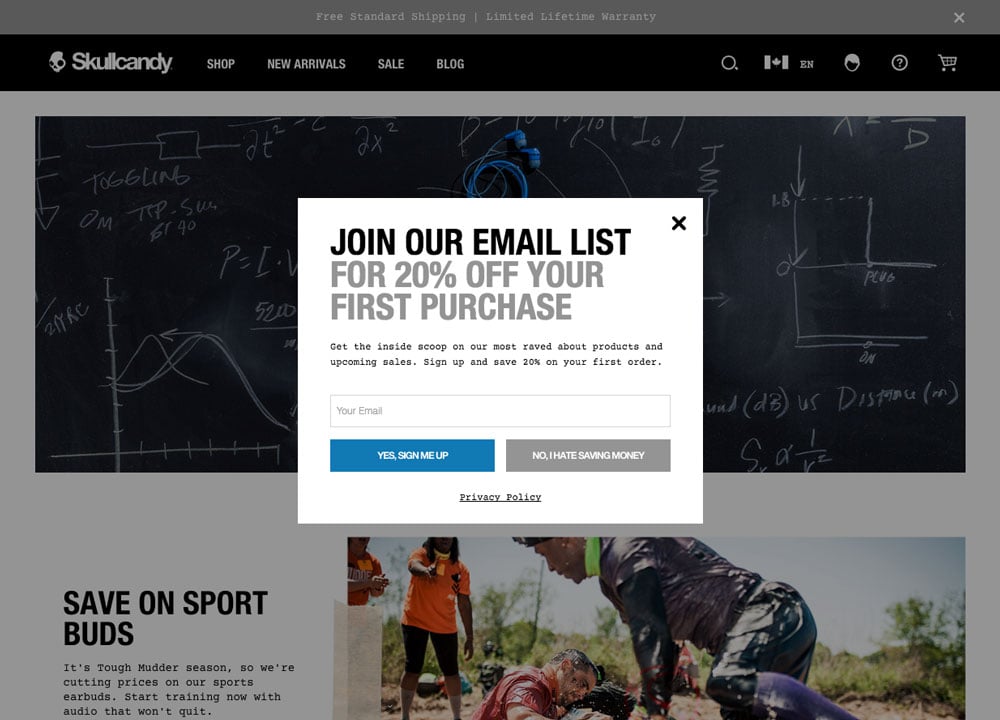
Pop-ups as a re-engagement tool: How to recover lost prospects?
Did you know that over 70% of visitors leave a site without taking action? Yet, these prospects are not necessarily lost: there are effective strategies to encourage them to return. Well-used re-engagement pop-ups capture their attention at the right moment and turn an imminent exit into a conversion opportunity. By playing on the right message and timing, you can recover a significant portion of these visitors. Discover how to optimize your pop-ups to maximize your chances of conversion!
Use exit-intent pop-ups to retain prospects
Every visitor who leaves your site without converting represents a lost opportunity. However, thanks to exit-intent pop-ups, it is possible to capture their attention one last time before they leave for good. These tools detect mouse movements towards the close button, prolonged inactivity, or tab switching to display a compelling message that encourages the user to stay.

The best types of exit pop-ups
To maximize their effectiveness, pop-ups should offer real added value to the visitor:
- Special offers: An exclusive discount or a gift to encourage immediate purchase. Example: “Wait! 10% discount if you order within the next 10 minutes.”
- Encouragement to sign up: A lead magnet (guide, free trial, checklist) in exchange for an email. This helps maintain contact with the prospect.
- Reassurance messages: Customer testimonials, money-back guarantees, or live support to address objections.
The impact of exit-intent pop-ups on conversion
The numbers speak for themselves: according to OptinMonster, a well-optimized exit-intent pop-up can recover 10 to 15% of departing visitors. Moreover, a study by Sleeknote shows that these pop-ups generate 5 times more conversions than a simple promotional message on the page.
👉 Implementing strategic pop-ups thus allows you to turn departing prospects into potential customers.
Turn a visitor into a qualified lead with recovery pop-ups
Attracting visitors to a site is one thing, but converting them into qualified leads is another. When a prospect is hesitant to engage, recovery pop-ups play a key role by offering a low-commitment action that maintains the relationship with your brand.

Create gradual engagement
A visitor who does not complete a purchase is not necessarily lost. A well-designed pop-up can encourage them to provide their email in exchange for valuable content:
- Simplified forms: A single field to capture the email, reducing friction and increasing the conversion rate.
- Integrated chatbots: A virtual assistant that offers real-time help to address objections and personalize the experience.
Segmentation and personalization
The relevance of the message is essential. Tailoring the pop-up based on visitor actions can significantly improve results:
- Visited product page? Offer an immediate discount or a cart reminder via email.
- Reading a blog post? Offer exclusive content in exchange for a sign-up.
Tracking and continuous improvement
The effectiveness of pop-ups does not solely rely on their implementation. Rigorous tracking and A/B testing are essential for optimizing their performance. A study from HubSpot shows that A/B testing of pop-ups can increase conversions by up to 49% by identifying the most persuasive elements.
👉 With a well-thought-out recovery strategy, hesitant visitors become qualified and engaged prospects, ready to be converted into customers.
Pop-ups are powerful tools for re-engaging prospects and maximizing conversions. By combining personalization, timing, and optimization, you transform visitors into customers. With Poosh, create effective pop-ups and boost your conversion strategy today!